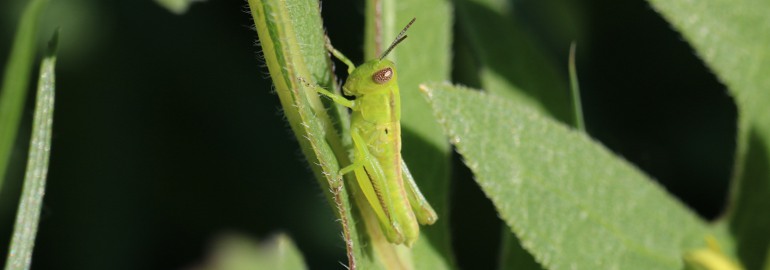Trip 6 - Heartland
Trip 6 is the trip to experience the transition from Eastern to Western environments. In general, the eastern part of the U.S. is wetter than the west, which is the dominant factor in creating the difference in forest and other environmental types. Starting in the Oak/Hickory forests of eastern Missouri, the trip takes you west through the grasslands of the Great Plains to the fir, spruce and pine forest types of Colorado.
Before getting into the natural environments, the trip starts in St. Louis at the Missouri Botanical Garden. Here is one of the best places to experience plants that do not exist natively in the continental U.S., as well as some that do. From there, it is a short trip across town to the Garden's Butterfly House. One of the foci of Trip 6 is on insects, and the Butterfly house is a site where native and non-native insects can be experienced.
Then the natural environments begin. Mark Twain National Forest, southwest of St. Louis, is a classic representative of the Oak/Hickory forest type, the most common type in the East. Within the area is Onondaga Cave State Park. Above ground is more of the same forest type. Below ground is the first cavern environment to be experienced in the Experiencing Life series. Caverns will be a focus in Trip 9, but this is a good introduction while we are in the area.
Then it is on to Kansas and the Konza Prairie. There are still trees in eastern Kansas but it should be obvious by the time you get to Konza that the predominant environment is grassland instead of forest. At Konza, which is still relatively wet compared to locations west, the grasses can be seven to eight feet tall, giving rise to the term "tallgrass prairie". As you move west, the grasses get shorter and shorter.
In the central part of Kansas, the grasses can be a mixture of tall and short grasses, which puts it in the category of mixed-grass prairie. Two places to experience this type of prairie are the Quivera National Wildlife Refuge and Cheyenne Bottoms. These sites also happen to be wetlands of international importance, and are good locations in which to experience the interior wetland environmental type.
Moving further westward, just before reaching the Rocky Mountains, the trip takes you to Pawnee National Grassland. It is obvious at this point that the tallgrass prairie has been left behind and we are now firmly within the shortgrass steppe environment.
Finally, the trip plunges into the mountains, where the forest types within Rocky Mountain National Park are clearly much different than those in Missouri and the East.
Trip 6 is unique amoung the twelve trips that are part of the Experiencing Life series, in that some of the sites are not meant to be experienced in a specific sequence. The sites above should be visited in the order given but there are three more recommended sites that can be squeezed in whereever they are convenient. Two of the sites are zoos, Omaha's and Sedgwick County's, and one is a natural site in the Platte River Valley of Nebraska, where the sandhill crane migration is a site to behold. There are also more alternate sites on this trip that can be visited in any order. Trip 6 is essentially a small organized trip supplemented by a series of day trips.
Timing Events:
- Mid-February to Mid-April – Crane migration along South Platte
- Mid-March – Cheyenne Bottoms migration peak
- Early June - Abundant wildflowers at Konza Prairie
|



